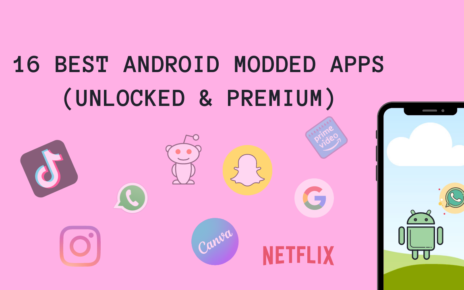Here in this article, we will discuss pre-coding steps you should perform before writing the first line of code for your mobile app. Pre-coding steps described here are crucial for efficient and low-cost mobile app development.
Developing a mobile app is an exciting venture, but before diving into coding, it’s crucial to lay a solid foundation. Proper planning, design, and documentation can save you time, effort, and resources in the long run.
In this article, we’ll outline the essential pre-coding steps in the simplest possible manner to ensure a successful mobile app development journey.
Contents
- 1 Pre-coding steps to perform (before actual mobile app coding)
- 1.1 1. Define clear objectives (aligned with Market Research)
- 1.2 2. Create Wireframes and Prototypes
- 1.3 3. Design a Database Diagram
- 1.4 4. Define App Architecture
- 1.5 5. Choose a Version Control System
- 1.6 6. Create a Development Roadmap
- 1.7 7. Establish Coding Standards and Guidelines
- 1.8 8. Secure Necessary Resources
- 2 Closing Thoughts
Pre-coding steps to perform (before actual mobile app coding)
1. Define clear objectives (aligned with Market Research)
We often get obsessed with our idea and overlook the possibility that there might be mobile apps existing with similar ideas. This is the very first step before actual mobile development. Check if your idea has been already implemented somewhere.
The next sub-step is to do market research. Once you are assured that your idea is unique, research your target market thoroughly. Identify your target audience, their needs, and their pain points. Analyze your competitors’ apps to understand what works well and what could be improved. Market research will help you create a unique selling proposition (USP) for your app and ensure it caters to the right audience.
The last sub-step is to establish clear objectives for your app. Outline what problems it will solve and what value it will provide to users. Having a well-defined purpose will guide your development process and ensure that your app addresses the intended goals effectively.
Note –
I prefer to use notebook apps like Notebook by Zoho or Keep by Google to note down all possible findings while doing research and later update it in an actual project-related document.
2. Create Wireframes and Prototypes
Once you have clear objectives you should design wireframes and prototypes of your mobile app. This step also doesn’t require you to write a single line of code.
This step, that is designing wireframes and interactive prototypes, will help you visualize the app’s layout, user interface (UI), and user experience (UX).
Here is a comprehensive guide to finding the best Mobile App Prototyping Tools for better mobile app UI/UX design. A few of the tools described there are Sketch, Figma, or Adobe XD to create mockups that showcase the app’s flow and interactions. This step allows you to gather feedback and make necessary adjustments early in the development process.
Here is an example of a Prototype developed by App Brewery Co., a prominent app development company that offers multiple Udemy courses related to UI/UX designs.
3. Design a Database Diagram
Once you have a fair idea about the objective of your mobile app and a working prototype the next step of pre-coding steps of mobile app development would be Database Diagram design.
By this time you have some idea about the data points required for your app. Your task here is to plan the database architecture for your app and identify the data entities, relationships, and attributes required to store and retrieve data efficiently.
Here you should design a well-structured database diagram using tools like Lucidchart or Draw.io to ensure a robust and scalable backend for your app. You can read more about Database diagram tools here.
4. Define App Architecture
In this step of pre-coding steps, your aim is to outline the app’s architecture and technology stack.
In more simple words, you need to decide whether you’ll build a native app, a hybrid app, or use frameworks like React Native or Flutter. Do your research and select the optimum option for your app.
You also need to define the backend technology, databases, and any third-party APIs you’ll integrate into your app.
5. Choose a Version Control System
Version control is one of the pre-coding steps of mobile app development that often gets overlooked. This step is especially important if you are going to work in a team and multiple developers are going to collaborate.
Therefore version control is essential for collaborative app development. Choose a version control system like Git and set up a repository to track code changes, collaborate with team members, and manage different app versions effectively.
6. Create a Development Roadmap
While talking about this step I am recalling a scene from an Americal Television series Silicon Valley where Richard and his team put their roadmap and tasks into sticky notes and put it on their whiteboard. They compete to remove as many notes from their side as others. It was a fun game between developers.
But on a serious note, you should definitely develop a clear development roadmap with milestones, deadlines, and feature prioritization. Breaking down the development process into manageable tasks will help you stay on track and avoid unexpected delays.
7. Establish Coding Standards and Guidelines
Define coding standards and guidelines to ensure consistency and readability in your codebase. Establish rules for naming conventions, indentation, commenting, and other best practices that all team members should follow. This helps in the long run.
8. Secure Necessary Resources
Ensure that you have the required resources, including hardware, software, and development tools, to support the development process. Additionally, secure any necessary licenses or permissions for third-party libraries or APIs you plan to use.
I usually work on Flutter and once I have a prototype ready I start collecting packages necessary to achieve the UI or even other features. It helps in the quick and smooth development of mobile apps.
Closing Thoughts
I hope you find the pre-coding steps for mobile app development useful. Taking the time to complete these pre-coding steps is essential for a successful mobile app development project.
From market research and wireframing to database design and establishing coding standards, each step contributes to the overall success of your app. Proper planning, design, and documentation set the stage for efficient development and a user-friendly app that meets your objectives and exceeds users’ expectations.
I have used these pre-coding steps in my app development and leveraged productivity. By following these steps, you’ll also be well-prepared to embark on your mobile app development journey with confidence.




